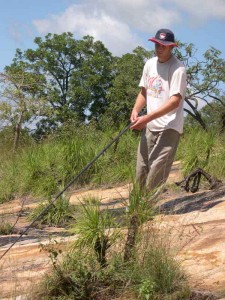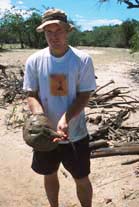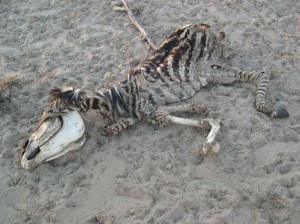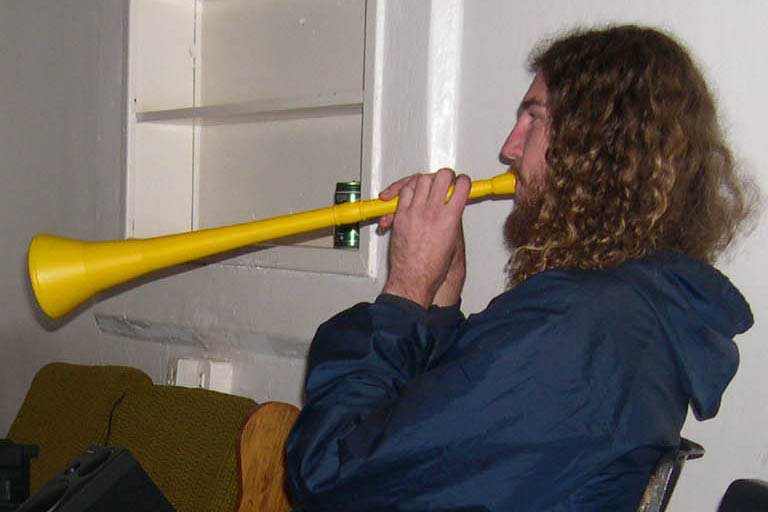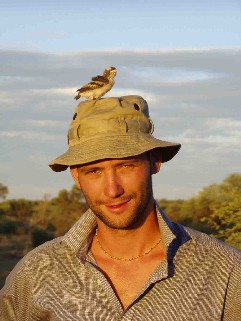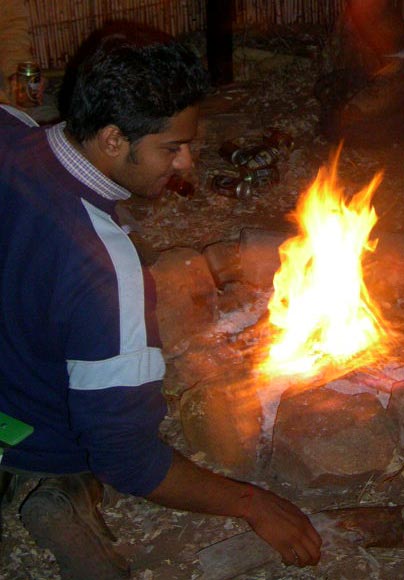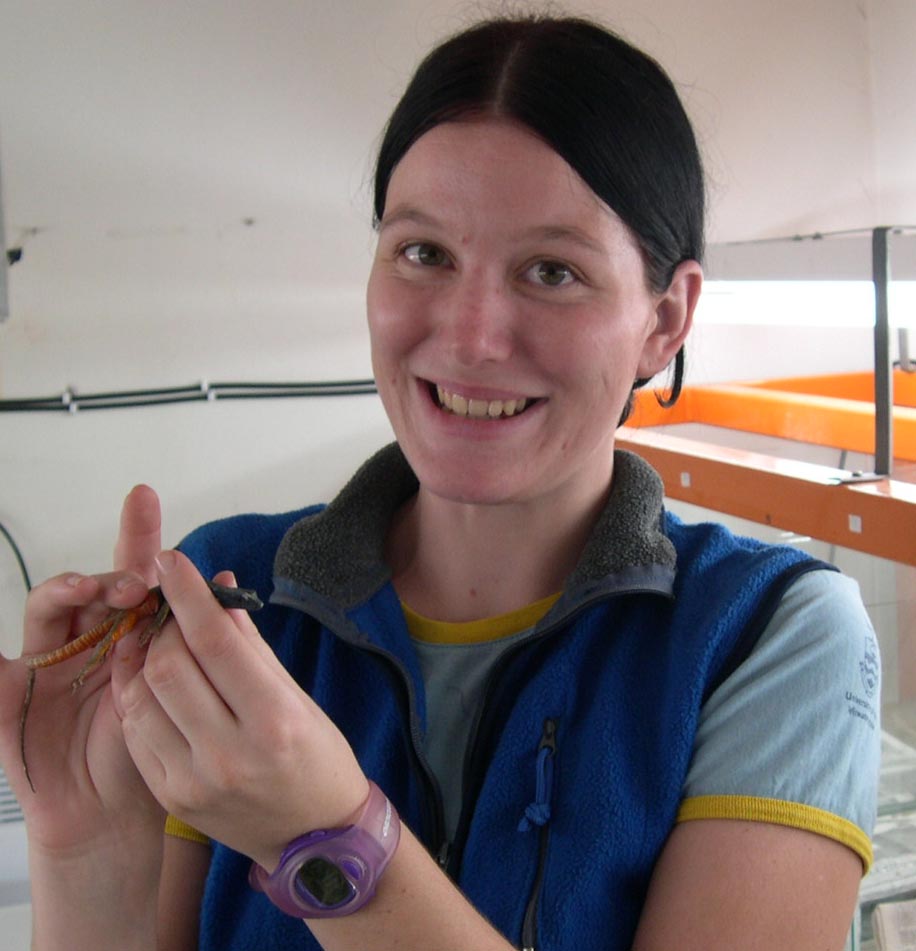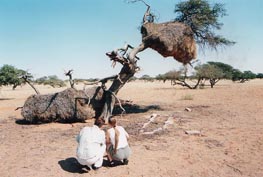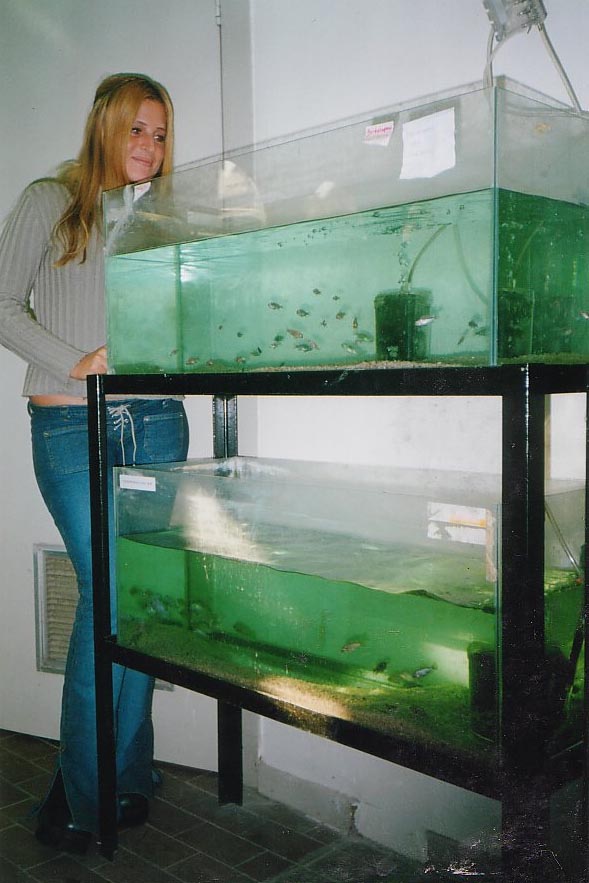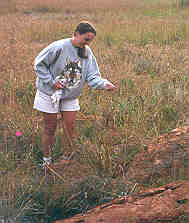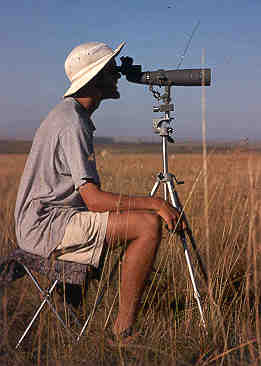Hall of Fame: Students
Iván Beltran – PhD 2020
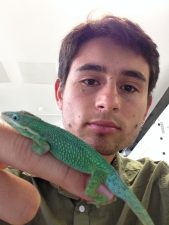
Iván worked on the impact of global warming on cognition, behaviour, development, and physiological performance capacity in Saiphos skinks with different reproductive modes, and geckos. The title of his thesis is “Taking the heat: Can mothers buffer global warming and still produce smart babies? “
Angela Simms – MRes 2019
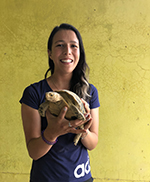
For her MRes (Master of Research) thesis, Ang studied the spatial ecology, habitat selection, activity and demography of the Sulawesi forest turtle (Leucocephalon yuwonoi), which is considered Critically Endangered by the IUCN. The conservation of this species has been hampered by a lack of baseline ecology for this species. Angela conducted a field telemetry study of adult male and female turtles, and also collected data by capture-mark-recapture. Thanks to Angela and her team of Indonesian field assistants, we now have important baseline ecological data on this poorly studied species that can hopefully be useful to future conservation efforts.
Angela’s MRes was supervised by Simon Clulow, Sean Doody and Martin Whiting, but somehow she survived!
You can follow Angela and see her photos from the field on Instagram and Twitter.
Birgit Szabo – PhD 2019
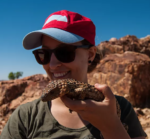
For her PhD, Birgit studied behavioural flexibility in Egernia group skinks and the potential links between sociality and cognitive ability.
Here is her PhD abstract: Comparative cognition recently advanced towards a wider taxonomic approach evidenced by an increase in non-avian reptile learning studies but our knowledge still exhibits many gaps. In primates, sociality is linked to enhanced cognitive ability. My aim was to investigate if sociality affects cognitive ability in four Australian lizard species. I specifically focused on behavioural flexibility, which is an index of an organism’s ability to cope with environmental change at a cognitive level. I applied the ID/ED attentional set-shifting paradigm which includes several colour/ shape discriminations, reversals of these discriminations, an acquisition of a new colour/ shape discrimination and a shift from colour to shape (and vice versa). Moreover, I tested how age affects learning, if behavioural flexibility correlates with unpredictable environmental conditions and how inhibitory control is exercised in different contexts. Finally, I tested if individual differences in learning could be explained by sex utilising a meta-analytic approach. All four tested species discriminated between onedimensional stimuli, however, only three out of four showed behavioural flexibility and only two species successfully completed the shift stage learning each set of stages like a new problem. Furthermore, juvenile lizards learnt at adult levels, behavioural flexibility was enhanced in the arid-adapted species and lizards showed context specific inhibitory skills. Neither trials to criterion nor the number of successful individuals differed between the tested species belonging to the Egernia group implicating no adaptations based on sociality in the tested context. Furthermore, the fourth tested, non-Egernia species, failed to perform even a single reversal. Importantly, resource predictability predicted learning proficiency in one species suggesting that other species-specific adaptations underlie differences in learning between species. Similarly, in my meta-analysis a sex difference emerged only between species. Overall, my results contribute important new insights into lizard cognition, however, we need more data on a broader range of lizards to make distinct conclusions on how sociality or ecology affect learning.
Check out Birgit’s web site, her ResearchGate page and Google Scholar profile. Follow Birgit on Twitter.
Isabel Damas Moreira – PhD 2019
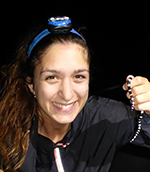
For her PhD, Isabel examined the role of behaviour and cognition in the invasive ability of the Italian wall lizard, Podarcis sicula.
Part of PhD abstract: Behaviour is believed to play a key role in the success of invasive species, although the mechanisms are still unclear, especially for unintentional invasions. Members of the lizard genus Podarcis show high variability in their invasive potential and are thus a well-suited model for studying the role of behaviour during biological invasions. The Italian wall lizard, Podarcis sicula, is a globally invasive species that hitchhikes on transportation of people or cargo, and does well in novel environments. In addition to behaviour, there is mounting evidence that cognition may also be a determining factor for invasion success. The aim of my thesis was to understand the role of behaviour and cognition in determining what makes P. sicula such a good invader. I used animals from an introduced population in Lisbon (Portugal) to examine behavioural traits that might be linked to a species’ invasive success.
Although I focused on the invasive lizard P. sicula, my study highlights the potential role of behaviour and cognition in invasions more broadly. I predicted that P. sicula would have greater levels of behavioural flexibility than congeneric non-invasive species – P. bocagei and P. carbonelli. The ability to reverse a previously learnt discrimination can be indicative of behavioural flexibility. I used a discrimination task and a reversal and quantified the number of errors and overall learning ability of all three species. The invasive species had relatively less difficulty than the non-invasive species to reverse the task. Also, I found different cognitive ability between the invasive species and
Collectively, my thesis shows differences in cognitive skills between invasive and non-invasive Podarcis, and that the invasive P. sicula is able to socially learn from the same and different species. Also, P. sicula has behavioural traits (e.g. boldness and foraging efficiency) that can be linked to its invasive success. The results from these chapters highlight the potential importance of behaviour in biological invasions, and give insight into why this lizard species is such a successful invader, and into what impact it might have on native species. This work will hopefully contribute to a better understanding of the behavioural basis of invasions, and ultimately assist conservation efforts.
Check out Isabel’s web page and her ResearchGate and Google Scholar profile. Follow Isabel on Twitter.
James Baxter-Gilbert – PhD 2018
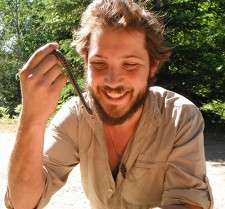
For his PhD, James worked on behavioural, ecological, and physiological adaptations by Eastern Water Dragons (Intellagama lesueurii) to anthropogenic landscapes.
Background
A prominent driver of biodiversity loss is habitat degradation and fragmentation resulting from human development and urbanization. Reptiles have suffered some of the most substantial population losses of all vertebrates; however, there are a certain reptile species that thrive in urban landscapes. What allows certain reptiles to survive and exploit urban landscapes where most cannot? Urban areas are a novel landscape that selects for particular life-history and behavioural characteristics, including high behavioural flexibility, altered stress physiology, modified morphologies, and increased reproductive output. James’ PhD research examined if urban Eastern Water Dragon populations are able to thrive because of population-level adaptations to the selective pressures of city life.
James is now a postdoctoral researcher at the University of Stellenbosch working with John Measey. Read more about his work here.
James’ publications are on ResearchGate and listed on Google Scholar. Follow James on Twitter.
Jodie Gruber – PhD 2018
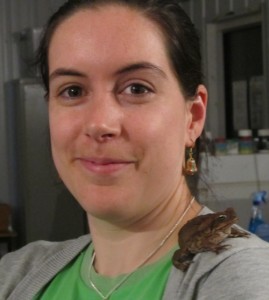
PhD abstract: The cane toad (Rhinella marina) is a notoriously successful invader that has established in over countries worldwide. Research on invasive cane toads in Australia has revealed rapid evolution of morphological and physiological traits related to dispersal rate in invasion-front toads. Behavioural traits may have evolved in similar ways. Traits such as high exploration, risk-taking, neophilia (an attraction to novelty) and sociality (which enables social learning) may drive invasion success in cane toads as these traits are likely to enhance dispersal and adaptation to novel environments. My PhD tested this prediction using standardised laboratory trials to examine divergence in behavioural traits in long-colonised versus invasion-front populations across the cane toads’ invaded range. I tested exploration, risk-taking, neophilia and social attraction in wild-caught toads from long-colonised versus invasion-front populations from the cane toad’s ongoing invasion across tropical Australia.
I also conducted the same behavioural trials using common-garden raised toads to tease apart genetic from environmental effects on behavioural divergence. I also investigated the effect of climate in the absence of prolonged range expansion by conducted behavioural trials using invasive cane toads from wet and dry climates from two Hawai’ian islands. My research revealed strong divergence in behavioural traits that enhance dispersal and adaptation to novel environments across the cane toads’ invasion range. Invasion-front cane toads were more exploratory, had a higher propensity to take risks, were more neophilic and more social than were conspecifics from long-colonised populations from Australia and Hawai’i. Furthermore, common-garden raised toads exhibited the same pattern of behavioural divergence as seen in wild-caught Australian toads, suggesting a heritable component. My research reveals that differential selection on behavioural responses to encountering novel environments in long-colonised versus invasion-front populations has led to a distinctive highly exploratory, bold (risk-taking), neophilic and social behavioural phenotype at the invasion-front.
You can follow Jodie’s work and get her publications on her ResearchGate page. Follow Jodie on Twitter.
Arnaud Badiane – PhD 2018
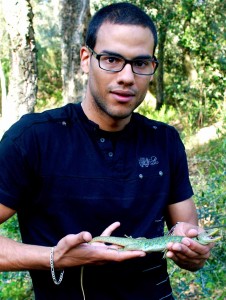
PhD project: Evolution of color (UV) signals in lizards
From Arnaud’s web page: Animals use a spectacular diversity of signals and studying them is central to understanding a range of biological processes including how animals interact socially, and how new species arise. According to animal communication theory, signal design evolves in response to two main selective forces acting on the tactical transmission of strategic information. Strategic design refers to any element associated with information content (i.e. signal reliability), while the tactical design has to do with the efficacy with which signals are transmitted, perceived, and processed by receivers in the environment (i.e. signal efficacy). Understanding how selection acting on the strategic and tactical components interact to shape signal design is crucial to unravelling the true complexity of animal communication. Colour signals constitute a major and functionally diverse class of signals. It is only recently that the signalling role of structurally produced colours, such as ultraviolet (UV), has been documented. UV colours, invisible to the human eye, have long gone unnoticed by scientists, and yet, their potential to remain hidden from predators lacking UV vision makes them particularly interesting.
During my PhD, I used lizards as a model to study the adaptive co-variation across and between UV colour features in relation to environmental factors and individual traits. More specifically, my objectives were 1.) to improve the general approach used to objectively measure small colour patches, 2.) to study how and to what extent habitat conditions can generate substantial variation in the design of UV signals at various levels of integration (i.e. intra-population and inter-population), 3.) to explore in details the information content of UV signals, that is investigating how design components relate to each other, and to individual quality traits, and 4.) to explore the possible roles UV colours may play in lizards, for example as deimatic (warning) displays.
To answer these questions, the European common wall lizard (Podarcis muralis) is an ideal model because males display sexually selected UV-blue signals on their flanks. First and foremost, after refining the methodology for reflectance spectrophotometry, I provided strong evidence that habitat conditions drive an adaptive response in the design of UV signals, whereby several signal design components respond to different selective pressures both within and between populations. In addition, I demonstrated that UV signals are complex multicomponent signals advertising male quality traits. Finally, I provided an example of UV patterns that potentially function as a deimatic display in the Australian northern blue-tongue skink (Tiliqua scincoides intermedia). This PhD thesis thus provided important insights rooted in animal communication theory and pave the way for future research foci.
To read more about Arnaud’s research and to follow his work, visit his web page. Follow Arnaud on Twitter.
Julia Riley – PhD 2017
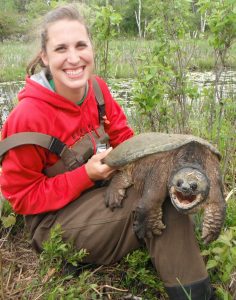
PhD: Social environment impacts behavioural development of a family-living lizard
For group-living animals, their social experience while growing up is known to influence multiple facets of their behaviour. My PhD research examined how social environment effects behavioural development in a unique social species – the family-living Australian tree skink (Egernia striolata).
I raised skinks either in isolation or in pairs, and examined the impact their social environment could have on (1) behavioural traits, (2) individual learning ability, (3) social learning ability, and (4) social competence (their behaviour when interacting with other individuals). My findings suggest that tree skink behavioural development was plastic depending on their social experience while growing up. But, tree skinks were also able to flexibly alter their social behaviour in response to the environment they are exposed to, even after long-term social isolation.
This research is evidence that isolation rearing does not consistently result in negative impacts on behaviour across all social taxa. Instead, tree skink behavioural development responds flexibly, and potentially adaptively, to the social environment in which they are raised.
Read all about Julia’s work on her web site, where you can also follow her on Twitter.
Fonti Kar – MRes 2015
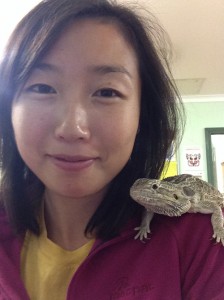
Fonti completed her masters (MRes) in 2015. She worked on the influence of social status on social learning in lizards with Dan Noble and Martin. Fonti was then hired by Dan and Martin to help to work on various projects and she was also our lab manager. She did an amazing job! Fonti moved to UNSW to do a PhD with Daniel Noble and Shinchi Nakagawa but she is still an integral member of the lab and has her lizards at Macquarie.
Kar, F., Whiting, M.J., and Noble, D.W.A. 2016. Influence of prior contest experience and level of escalation on contest outcome. Behavioral Ecology and Sociobiology 70:1679-1687.
Kar, F., M.J. Whiting, and D.W.A. Noble. 2017. Dominance and social information use in a lizard. Animal Cognition 20(5): 805-812.
To read about what Fonti is up to, check out her web page, and follow her on Twitter.
Daniel Hoops – PhD 2015
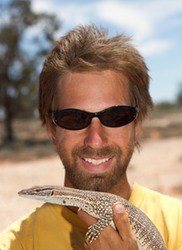
Brain Anatomy in Dragon Lizards
For my PhD I wanted to study brain anatomy variation in agamid lizards of the genus Ctenophorus, which are colloquially referred to as “dragons” in Australia. A guide to the brain anatomy of a particular species is called an “atlas”. There is no brain atlas that I am aware of for any dragon species, and very little is known about the brain anatomy of lizards in general. A large part of my PhD was describing the anatomy of the dragon brain. I made the first atlas of a dragon brain and contributed to other works on dragon anatomy.
Comparing Dragon Colouration
A significant part of my PhD project was based around the fact that some dragon species have flashily-coloured males and drab-coloured females, while in other species both the males and females are drab. While this seems evident simply by looking at pictures of males and females of various species, I learned that comparing colour across species is not that simple. Lizard eyes are not human eyes, and a lizard may look quite different from the perspective of another lizard compared to the perspective of a human. I put a lot of effort into, and got a lot of help, properly quantifying differences in colour between males and females across species.
Variation in Dragon Brain Anatomy
Ctenophorus dragons may all belong to the same genus but they vary in life history, ecology, and sex in ways that make them an ideal group with which to study the associated variation in brain structure. Once I had figured out what a dragon brain looked like, I wanted to compare dragon brain anatomy across species to see if I could find patterns in how brain anatomy changed. I compared differences in brain structure with differences in external body morphology, ecological niche, and sexual selection to show that seemingly random differences in brain anatomy between species can be explained by evolutionary history.
Read all about Dan’s work on his web site. Follow Dan on Twitter.
Siobhan Dennison – PhD 2015
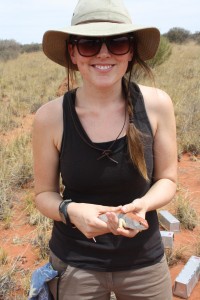
For my PhD, I investigated sociality and dispersal of the great desert skink, Liopholis kintorei. The great desert skink is one species of a unique group of Australian reptiles (the Egernia group), many of which live in stable, kin-based social groupings. The great desert skink is unique among Egernia because multiple individuals within their kin groups contribute to the maintenance and construction of the extensive burrow systems in which they live. This might suggest a level of cooperation not seen in any other reptile, and yet little is known about the population and group dynamics of this species. I am combined molecular tools with behavioural and mark-recapture data to investigate the social and dispersal behaviour of L. kintorei, and to test leading hypotheses on the maintenance of vertebrate sociality. Specifically I characterised the group structure, mating system and dispersal characteristics of this species, currently listed as vulnerable in Australia.
This information will be used both as a foundation for further study of the lizards’ social behaviour, and to provide insight into threatening processes, informing conservation management of this species in Central Australia. The project is carried out at the Australian Wildlife Conservancy’s Newhaven Sanctuary in the Northern Territory.
To follow Siobhan’s work, visit her ResearchGate page or her Google Scholar profile.
Marco Barquero – PhD 2014
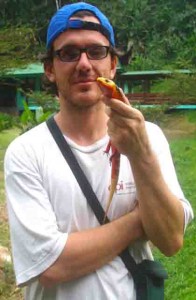
For my PhD I examined the evolution of signals in the Jacky Dragon and focused on the relative importance of visual cues using a combination of field-based and experimental studies. In particular, I sampled populations across the species’ geographic range to test whether signal design is influenced by habitat characteristics, temperature, species recognition, predation pressure, and sexual selection.
I asked the following questions: (1) is the signal design of the Jacky Dragon stable or labile across populations?, (2) what are the selective pressures driving the evolution of signal design in this species?, (3) are lizards able to discriminate between individuals from their own and from different populations?, and (4) is the divergence of signaling behaviour a by-product of genetic differentiation?
Marco is now an Associate Professor at the University of Costa Rica.
You can follow his work on ResearchGate.
Dan Noble – PhD 2014
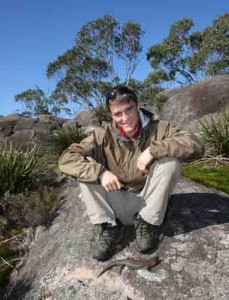
Evolutionary behavioural ecology of an Australian lizard with alternative reproductive tactics
PhD abstract: Evolution by natural and sexual selection requires an understanding of trait variability and heritability and the strength and form of selection on phenotypic traits. This thesis is an integrative overview of these important tenants of evolutionary biology using a model lizard system, Eulamprus quoyii. I begin by exploring the individual level of variability in spatial cognitive traits among males and test whether individuals are capable of complex spatial learning under semi-natural conditions. Contrary to previous research, I show that lizards are capable of quick and flexible spatial learning as would be predicted given its close link with fitness in the wild. In more controlled conditions, I test for sex differences in spatial learning and whether individual behavioural traits, linked to personality, affect spatial learning ability. As predicted, there were sex-differences in spatial learning, representing the first evidence of cognitive differences between the sexes in a reptile. In contrast to recent theory, I show that behavioural types were not linearly associated with cognitive performance in the spatial task and this may be a result of alternative mating tactics in E. quoyii. In the second part of my thesis I explore how selection acts on behavioural and performance traits using a large-scale breeding experiment under semi-natural conditions. Using a genetic pedigree, I test two alternative hypotheses for the prevalence of polyandry in this system and assess the degree to which offspring performance traits are heritable. I show that polyandry may evolve through direct benefits females receive through multiple mating rather than genetics benefits, given that offspring from single and multiple paternity females did not differ in fitness and because the fitness traits showed weak heritability. Finally, I test how natural and sexual selection act on behavioural and performance traits. I show that selection acts on behavioural traits disruptively possibly promoting the evolution of ARTs in E. quoyii. Selection on performance also suggests that different ARTs adopt different mechanisms to acquire paternity and that behaviours may be integrated with whole-organism performance traits. Patterns of selection on performance traits also provide a possible explanation for sex differences in morphology and performance I observed in E. quoyii.
Dan did two postdocs after his PhD, including a DECRA, before landing a lectureship at The Australian National University, starting in February 2019. To learn more about Dan’s research, and links to his papers, visit his web page.
Grant Webster-Honours 2012, Masters 2016
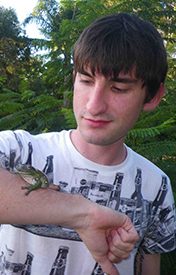
Grant did his honours (described below) with Martin in 2014. He then took a year off and did a lot of frogging before returning to do his MRes in 2016. This project was on taxonomy and geographic variation in the Pseudophryne bibronii complex.
Honours 2012. Sexual selection in the frog Litoria revelata.
Dynamic (physiological) colour change in the context of sexual selection is almost unstudied in frogs. The whirring tree frog (Litoria revelata) is one of several Australian frogs which use colour during sexual advertisement. My honours project tested whether colour is indicative of male quality. To this end, I measured the colour of amplectant males (in Wallingat NP, NSW) before briefly moving the pair to a container where the female could lay her eggs. By quantifying hatching success and then the proportion of tadpoles that successfully metamorphose, I obtained a measure of reproductive fitness. I also tested for a correlation between their call and aspects of colour to establish whether the call signals different information or reinforces the same signal. Interestingly, males do not turn back to their basal colour after pairing up with the female, which is what we would predict if colour signals are conspicuous and costly. This is the case for the Costa Rican toad Bufo luetkenii (see Biol. Lett. (2010) 6, 63–66).
Bell, R.C., G.N. Webster, and M.J. Whiting. 2017. Breeding biology and the evolution of dynamic sexual dichromatism in frogs. Journal of Evolutionary Biology 30: 2104–2115.
See a Lizard Lab blog posting and photos from my work.
Ben Clark–Honours 2012

For my honours I studied cognition in the eastern three-lined skink Bassiana duperreyi, a small skink species that has been a model species for a range of questions related to phenotypic plasticity. I examined which factors influence cognitive ability, with a focus on incubation effects, as well as gender or physical factors such as size and speed. This work was in collaboration with Josh Amiel and Rick Shine at the University of Sydney. Eggs were incubated at ‘hot’ and ‘cold’ temperatures at the University of Sydney, after which the offspring came across to Macquarie for learning experiments.
Clark, B.F., J.J. Amiel, R. Shine, D.W.A. Noble, M.J. Whiting. 2014. Colour discrimination and associative learning in hatchling lizards incubated at ‘hot’ and ‘cold’ temperatures. Behavioral Ecology and Sociobiology (2014) 68:239-247.
Renata Kopena – visiting PhD student 2012
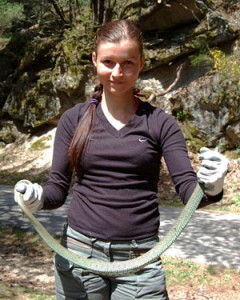
Renata was a PhD student at the National Museum of Natural History in Madrid, Spain, in Jose Martin’s lab. Reni visited the lab for two months to work on water dragons with Martin and Dani in 2012.
Renata’s work involved looking at chemical signals in water dragons and trying to uncover the chemical compounds. She did part of this work in Ian Jamie’s lab at Macquarie.
Here is a blurb from ResearchGate about Renata’s PhD: Function and evolution of multiple signals in sexual selection processes of Schreiber’s green lizard (Lacerta schreiberi). The main goal of my thesis is to study the function, evolution and maintenance of the multiple sexual signals that Lacerta schreiberi lizards use in sexual selection processes, and how the natural selection pressure on these signals affects antipredator strategies of lizards. I have been researching sexual signals of Lacerta schreiberi related with antioxidants, immune system and parasites, furthermore, their role in mate choice and reproductive success.
You can follow Renata’s work and access her papers on ResearchGate.
Mitch Scott – Honours student (University of Sydney) 2011-2012
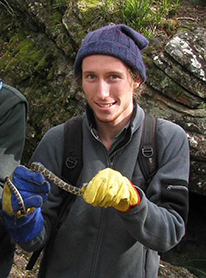
I worked on pheromonal signalling of body size and fighting ability in small-eyed snakes. I was co-supervised by Jonathan Webb and Rick Shine. Our work demonstrated the first instance of territorial behaviour in a snake in the context of reproductive behaviour. Small-eyed snakes engage in contest behaviour and chemical cues are very important in refuge selection and therefore, for obtaining social information about potential mates and rivals. These snakes also appear to be able to gauge size from scent. For example, males prefer scents from larger females (fecundity selection) and avoid larger males’ scent cues.
Scott, M.L., M.J. Whiting, J.K. Webb, and R. Shine. 2013. Chemosensory discrimination of social cues mediates space use in snakes, Cryptophis nigrescens (Elapidae). Animal Behaviour 85:1493-1500.
Webb, J.K., M.L. Scott, M.J. Whiting, and R. Shine. 2015. Territoriality in a snake. Behavioral Ecology and Sociobiology 69(10):1657-1661.
Kerrie Wechmann – Honours 2011
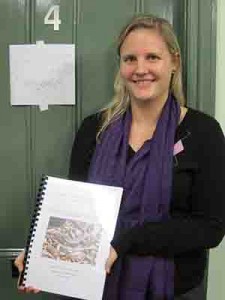
I did my honours from mid-2010-mid-2011. My research project focused on how behaviour and social interactions influence reproductive success in Eastern Water Skinks (Eulamprus quoyii)
Specifically, I attempted to answer the following questions:
1. Do males that win more interactions/contests have higher reproductive success?
2. Do males that spend more time interacting with females have higher rates of paternity? (I.e. lower levels of multiple paternity within clutches).
3. Do male that have established territories have higher levels of reproductive success? (Activity levels/movement around enclosure and how this impacts on fitness).
Noble, D.W.A, J.S. Keogh, K. Wechmann, and M.J. Whiting. 2013. Behavioral and morphological traits interact to promote the evolution of alternative reproductive tactics in a lizard. The American Naturalist 182(6):726-742.
All students from here on (down) were based at The University of the Witwatersrand, in the School of Animal, Plant, and Environmental Sciences. The lab moved to Macquarie University in October 2009.
Martin van der Meer – Honours 2007
Martin worked on the ecology of the lizard genus Nucras. To this end, he worked through a large number of preserved lizards in museum collections. He was cosupervised by Bill Branch. Martin then did his PhD at James Cook University in Townsville, Australia.
Here is part of the Copeia abstract (citation below) that explains his honours work: Sandveld lizards (genus Nucras) are widespread in southern Africa, but are generally secretive and poorly known. We examined 385 preserved specimens from five species of Nucras collected over a broad time span (104 years) and a geographic area covering most of South Africa and Swaziland. We had three main objectives: to test for sexual size dimorphism, to quantify male and female reproductive cycles, and to determine diet. In addition, we examined the importance of scorpions in the diet of Nucras based on previous studies reporting an unusually high incidence of scorpions in the diet of Kalahari N. tessellata.
van der Meer, M.J., Whiting, M.J., and W.R. Branch. 2010. Ecology of Southern African Sandveld Lizards (Lacertidae, Nucras). Copeia 2010:568–577.
You can read about Martin’s research on his ResearchGate page.
Melanie Ferreira-Martins – Honours 2007
Melanie did a comparative study of testis size and sperm morphology in relation to degree of sexual selection in a wide range of Africa lizard species.
Honours thesis: 2007. Influence of sperm competition risk on testes size and sperm morphology in cordylid lizards.
For this project she examined jars and jars of museum specimens and measured lizard testes and a range of morphological variables, before doing a comparative analysis in the context of sexual selection.
She was ably co-supervised by Phil Byrne, while he was a postdoc working in Martin’s lab.
Melanie has had great success running a business in tutoring high school students.
She is the owner/manager of A+ Tuition in Johannesburg.
Helen Place-Honours 2006, PhD 2012
Helen worked on the influence of male status on colour expression and behaviour in Augrabies flat lizards:
“The role of colour and pheromones in reducing the costs of being subordinate” for her honours.”
We convinced Helen to continue working on flat lizards for her PhD. For her PhD, Helen studied colour signals in Platysaurus i. wilhelmi. She studied how hormones and immunocompetence interact and how signals are constrained. She also looked at how whole-organismal performance is influenced by this interaction.
Helen graduated with a PhD in 2012.
Trevor McIntyre – MSc Resource Conservation Biology 2006
Trevor completed his MSc thesis on the conservation biology of giant sungazers in the Welkom area, Free State Province. This work was conducted largely on mine properties belonging to Anglo Gold. He was co-supervised by Isabel Wiersbye.
Trevor put his masters on hold for a year, while he worked as a research assistant on Marion Island. He then worked as an environmental consultant before doing a PhD at the University of Pretoria.
T McIntyre, M J Whiting (2012) Elevated metal concentrations in the Giant Sungazer lizard (Smaug giganteus) from mining areas in South Africa Archives of Environmental Contamination and Toxicology In press:
Toby Hibbitts – PhD June 2006
Toby’s PhD work focused on sexual selection & signalling in barking geckos in the Kalahari Desert of South Africa. Toby also dissected preserved geckos and collaborated with Huey and Pianka by pulling together all their historical data on these amazing lizards.
Toby is back in Texas, working as a curator in the Texas Cooperative Wildlife Collection at Texas A&M University.
Hibbitts, T.J., E.R. Pianka, R.B. Huey, and M.J. Whiting. 2005. Ecology of the common barking gecko (Ptenopus garrulus) in southern Africa. Journal of Herpetology 39:509-515.
Hibbitts, T.J., and M.J. Whiting. 2005. Do male barking geckos (Ptenopus garrulus garrulus) avoid refuges scented by other males? African Journal of Herpetology 54:191-194.
Hibbitts, T.J., M.J. Whiting, and D.M. Stuart-Fox. 2007. Shouting the odds: vocalization signals status in a lizard. Behavioral Ecology and Sociobiology 61:1169-1176.
Luke Schutz–Honours 2005
Luke was co-supervised by Devi and Martin.
Thesis title: Does the lizard Platysaurus broadleyi aggregate because of resource limitation or social factors?
Schutz, L., D. Stuart-Fox and M.J. Whiting. 2007. Does the lizard Platysaurus broadleyi aggregate because of social factors? Journal of Herpetology 41:354-359.
Luke then went on to medical school and is a doctor.
Walter Reisinger-Honours 2004
Walter was co-supervised by Devi Stuart-Fox and Barend Erasmus. His honours dealt with the conservation ecology of an undescribed, endangered dwarf chameleon. His honours project was published in Oryx (citation below). Here is the abstract: We quantified habitat associations and evaluated the conservation status of a recently identified, undescribed species of dwarf chameleon, Bradypodion sp. nov. Dhlinza, endemic to scarp forest remnants in KwaZulu-Natal Province, South Africa. At the microhabitat scale the Dhlinza dwarf chameleon was found more often in forest gaps and near paths than highly disturbed edges or forest interior. Chameleon presence was not explained by forest physiognomic variables such as vine cover, shrub and tree density, or canopy cover. Presence near gaps may be better explained by the combined effects of the thermal microenvironment and food availability. The species is moderately common where it occurs, with estimated densities of 4.7, 8.7 and 29.7 individuals per ha within forest interior, edges and gaps respectively. At the landscape scale, the chameleon occurs only in three remnant forests: the Dhlinza, Entumeni and Ongoye Forests. The species’ extent of occurrence was estimated to be 88 km2 and its area of occupancy 49 km2. Based on the small area of remaining suitable habitat, this species meets the requirements for categorization as Endangered according to IUCN Red List criteria.
Reisinger, W.M., Stuart-Fox, D. M. and Erasmus, B. F. N. 2006. Habitat associations and conservation status of an indigenous forest restricted dwarf chameleon from southern Africa. Oryx, 40:183-188.
Jörg Melzheimer–Diploma 2003
Jörg was registered at the University of Potsdam in Germany. He was co-supervised by Martin Whiting and worked on Kalahari tree skink habitat modelling as part of the BIOTA project.
Thesis title: Spatiotemporal habitat use with particular emphasis on landscape structure related dispersal events of Trachylepis striata and Trachylepis spilogaster.
He is currently working on a cheetah conservation project in Namibia, as part of his PhD. Here is a recent paper from the cheetah work:
Bettina B Wachter, Anne-Sophie AS Blanc, Jörg J Melzheimer, Oliver P OP Höner, Mark M Jago and Heribert H Hofer. An advanced method to assess the diet of free-ranging large carnivores based on scats. PLoS One 7(6):e38066 (2012) PMID 22715373
Kinesh Chetty-Honours 2003
Kinesh did the OTS (Organisation for Tropical Studies through Duke University) programme in Costa Rica. After returning to South Africa he did his honours project at Wits Rural Facility studying anthropogenic disturbance on tree agamas. Interestingly, tree agamas do rather well in villages perhaps because there are fewer predators and more insect prey.
Kinesh subsequently completed an MSc with Andrew Mckechnie at Wits before entering the private sector. He first worked as a project manager for EcoSecurities.
Kinesh is the founder and managing director at GreenerFuture.
Whiting, M.J., K. Chetty, W. Twine and P. Carazo. 2009. Impact of human disturbance and beliefs on the tree agama Acanthocercus atricollis atricollis in a South African communal settlement. Oryx 43:586-590.
Here is part of the abstract from the Oryx paper: We conducted visual encounter surveys of A. a. atricollis and interviewed local households to establish whether human attitudes and actions could affect tree agama populations. Although local residents viewed tree agamas negatively (50% of interviewees claimed to have killed an agama) and acted to exclude them from their environment, tree agama density in villages was higher than that of adjacent communal rangelands and than a previously reported density estimate in a nearby protected area. We suggest three major factors that could explain why tree agamas are favoured in this peri-urban landscape in the face of human persecution: firstly, predators such as snakes and raptors are likely to occur at a much lower density in periurban areas; secondly, their primary prey (insects) may be more abundant or accessible in this landscape; thirdly, they may experience less competition for resources.
Belinda Lewis–Honours 2003, MSc 2007
Belinda worked on pheromonal recognition between two sister taxa of flat lizards: Platysaurus broadleyi and Platysaurus capensis. Belinda completed her masters on sexual selection and signalling in the Waterberg flat lizard (Platysaurus minor) in December 2006 and graduated in 2007.
Belinda has gone on to great things. She is is currently head of product strategy at Praekelt Digital.
Lewis, B.A., M.J. Whiting, and J. Stapley. 2007. Male flat lizards prefer females with novel scents. African Zoology 42:91-96.
Tasmin Rymer–Honours 2002
Tasmin’s honours thesis was on Kalahari tree skinks and tree selection in relation to the presence and extent of sociable weaver nests. She tested whether skinks gain benefits (e.g., reduced predation risk) by selecting trees containing sociable weaver nests.
Tasmin then moved to the University of Pretoria to do a masters before returning to Wits to do a PhD with Prof. Neville Pillay.
Tasmin is currently at James Cook University in Cairns, in the School of Marine and Tropical Biology.
Check out Tasmin’s research and publications on ResearchGate. Follow Tasmin on Twitter.
Kathy Hernstad–Honours 2001
Kathy was my first ‘non-reptilian’ student. (Read that as you will!) Kathy worked on carotenoid-based sexual selection in Malawian cichlids for her honours thesis.
Kathy maintained cichlids on low and high carotenoid diets and measured mate preference in relation to signal quality. Unfortunately we never published this work, but Kathy did show that diet increased different components of colour and this had an effect on mate preference–females preferred brighter males.
She is living in London. Kathy is currently working as a personal trainer and nutritional adviser.
Kathy is most definitely the fittest student Martin has ever had!
Check out soul4cycle
Sue McConnachie–Honours 2000, PhD 2006
Sue was my first honours student. Her project was on the costs of tail loss in crag lizards. She then did a PhD on crag lizard ecophysiology (cosupervised with Graham Alexander). She is currently living in Hilton and completed a postdoc with Mike Perrin at the University of Kwazulu-Natal at Pietermaritzburg where she is now working as a tutor.
McConnachie, S.M., and M.J. Whiting. 2003. Costs associated with tail autotomy in an ambush foraging lizard, Cordylus melanotus melanotus. African Zoology 38: 57-65.
McConnachie, S., G.J. Alexander and M.J. Whiting. 2007. Lower temperature tolerance in the temperate, ambush foraging lizard Pseudocordylus melanotus. Journal of Thermal Biology 32:66-71.
McConnachie, S., G.J. Alexander, and M.J. Whiting. 2009. Selected body temperature and thermoregulatory behavior in the sit-and-wait foraging lizard Pseudocordylus melanotus melanotus. Herpetological Monographs 23:108-122.
Simon Lailvaux-MSc 2002
Simon worked on Platysaurus i. wilhelmi at Pullen Farm near Nelspruit. His MSc focused on intersexual differences in performance in relation to temperature and predation risk. He then completed his PhD at Tulane University in New Orleans, working in Duncan Irschick’s lab. This was followed by a postdoc in Belgium, followed by a postdoc in Australia with Rob Brooks (University of NSW). Simon now has a tenure-track position at the University of New Orleans where he continues to do all kinds of cool work on performance.
Check out Simon’s Integrative Ecology & Evolution Lab at UNO. Follow Simon on Twitter.
Lailvaux, S.P., G.J. Alexander, and M.J.Whiting. 2003. Sex-Based Differences and Similarities in Locomotor Performance, Thermal Preferences, and Escape Behaviour in the Lizard Platysaurus intermedius wilhelmi. Physiological and Biochemical Zoology 76:511-521.
Leann Reaney-MSc 2002
Leeann worked on the ecology and mating system of tree agamas. Lee then spent a year teaching English in Taiwan before returning to South Africa to spend about 3 months working in the lab, where she was a spectacular help and did lots of collaborative work with Martin. Leeann did her PhD (2004-7) at Australian National University working on fiddler crabs in Darwin with Pat Backwell. Leeann then did a postdoc with Rob Knell at the School of Biological Sciences, Queen Mary, University of London. Leeann is living in Melbourne.
Reaney, L.T., and M.J. Whiting. 2002. Life on a limb: ecology of the tree agama (Acanthocercus a. atricollis) in southern Africa. Journal of Zoology, London 257:439-448.
Reaney, L.T., and M.J. Whiting. 2003. Are female tree agamas (Acanthocercus atricollis atricollis) turned on by males or resources? Ethology, Ecology & Evolution 15:19-30.
Check out Leeann’s research and publications on ResearchGate.
Rhett Smart-MSc 2001
Rhett’s thesis focused on lizard conservation biology in communal lands near the Kruger National Park. He then worked as an environmental consultant in Gauteng before moving to Cape Town. Rhett is currently working for Global Vision International, as a field biologist in Patagonia.
Smart, R.M., M.J. Whiting, and W. Twine. 2005. Lizards and landscapes: Integrating field surveys and interviews to assess the impact of human disturbance on lizard assemblages and selected reptiles in a savanna in South Africa. Biological Conservation 122:23-31. (Published online in 2004.)
Here is a blurb from the above paper’s abstract: Habitat degradation through over-grazing and wood collection is especially prevalent in developing countries such as South Africa. As human populations expand and the demand for land increases, the traditional idiom of setting aside protected areas for conservation is insufficient and assessment and protection of diversity outside these areas is needed. We assessed the impact of land use on lizard assemblages in communal rangelands in South Africa by comparing abundance, species richness and species diversity between degraded communal lands with a protected area.
Monica Wyman-Diploma 2001
Monica worked on two separate, unrelated projects: foraging ecology of skinks and species/mate recognition in flat lizards. She recently completed her PhD back in Switzerland, having done her field work in Mali (after hastily leaving Côte d’Ivoire during a rebel incursion!). She is currently working in the Swiss Office for Federal Health. She has twin children, Anastasia and Leonardo.
Wymann, M.N., and M.J. Whiting. 2002. Foraging ecology of rainbow skinks (Mabuya margaritifer) in southern Africa. Copeia 2002:943-958.
Wymann, M.N., and M.J. Whiting. 2003. Male mate preference for large size overrides species recognition in allopatric flat lizards (Platysaurus broadleyi). Acta Ethologica 6:19-22.
Lanral Ruddock-MSc 2000
Lanral did his MSc at the University of Stellenbosch under the supervision of Professor Hannes van Wyk and Martin Whiting. His thesis work was on Cordylus giganteus, a species that lives in colonies in grasslands, in burrows. Lanral worked on social structure and did lots of cool work on chemical communication using the same study population as Hannes worked on for his PhD.
Ruddock, L. 2000. Social Structure of the Lizard, Cordylus giganteus. Unpubl. master’s thesis, Univ. of Stellenbosch, Stellenbosch, South Africa.
Also see: Losos, J.B., P.L.N. Mouton, R. Bickel, I. Cornelius, and L. Ruddock. 2002. The effect of body armature on escape behaviour in cordylid lizards. Animal Behaviour 64: 313-321.
He lived in New Zealand for a while, where he did lots of kite boarding. (Lanral is an expert kite boarder and involved in research and development.) Lanral is living in Cape Town and is Retail Manager at Board and Kite Africa.
Pius Korner-Diploma 1999
Pius was my first student. He finished a PhD back in Switzerland and currently runs a nature reserve with his wife. Pius studied species recognition in Platysaurus.
Korner, P., M.J. Whiting, and J.W.H. Ferguson. 2000. Interspecific aggression in flat lizards suggests poor species recognition. African Journal of Herpetology 49:139-146.

